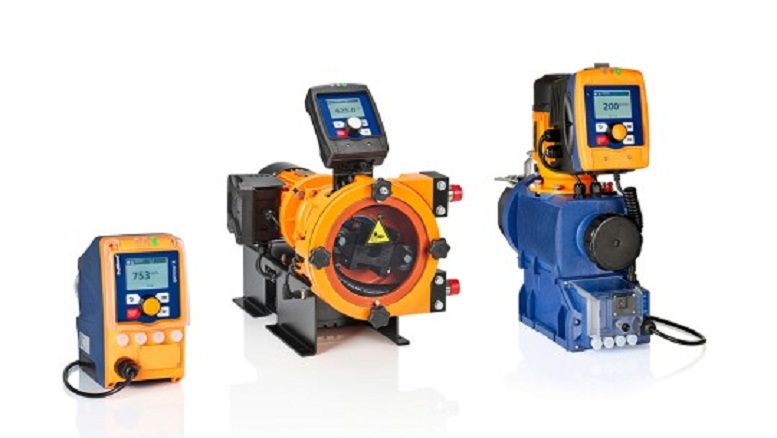Exploring the Precision of Small Metal Cutting Tools: A Comprehensive Guide

In the realm of precision engineering and manufacturing, small metal cutting tools play a pivotal role. These diminutive yet powerful instruments are the unsung heroes behind the intricate designs and flawless finishes of various metalwork projects. The world of small metal cutting tool, exploring their significance, types, applications, and the leading cutting tools equipment companies shaping the industry.
Understanding Small Metal Cutting Tools
Small metal cutting tools encompass a diverse range of instruments engineered to carve, shape, and refine metal surfaces with utmost precision. Despite their compact size, these tools pack a punch, offering high performance and accuracy crucial for intricate machining tasks.
Applications of Small Metal Cutting Tools
- Precision Machining: Small metal cutting tools excel in precision machining applications, including prototyping, aerospace components, and medical device manufacturing. Their ability to achieve tight tolerances and intricate geometries makes them indispensable in industries where precision is paramount.
- Micro Machining: Micro machining involves the fabrication of miniature components with dimensions in the micrometer range. Small metal cutting tools are instrumental in micro machining processes, enabling the production of intricate microstructures and features with exceptional accuracy and repeatability.
- Jewelry Making: Jewelry making relies heavily on small metal cutting tools for crafting intricate designs and embellishments. From cutting intricate patterns to shaping metal alloys, these tools empower artisans to bring their creative visions to life with precision and finesse.
Optimizing Performance with Small Metal Cutting Tools
- High-Speed Machining: Small metal cutting tools are capable of operating at high speeds, allowing for rapid material removal and increased productivity. High-speed machining techniques leverage the superior performance of small cutting tools to achieve shorter cycle times and lower production costs while maintaining exceptional surface finishes and dimensional accuracy.
- Advanced Coatings: Many small metal cutting tools feature advanced coatings that enhance tool life and performance. These coatings, such as titanium nitride (TiN), titanium aluminum nitride (TiAlN), and diamond-like carbon (DLC), provide wear resistance, reduce friction, and improve chip evacuation, resulting in extended tool life and improved machining efficiency.
- Custom Tooling Solutions: Cutting tools equipment companies offer custom tooling solutions tailored to specific machining applications and customer requirements. From custom end mills with unique geometries to specialized inserts for exotic materials, these bespoke cutting tools empower manufacturers to optimize their machining processes and achieve superior results.
Challenges and Solutions
- Chip Control: Managing chips is a critical aspect of metal cutting operations, especially when using small cutting tools. Poor chip control can lead to tool wear, surface finish issues, and machining inaccuracies. Cutting tools equipment companies address this challenge through the development of specialized chip breakers, coolant delivery systems, and optimized cutting parameters to promote efficient chip evacuation and prevent chip recutting.
- Heat Generation: Heat generation during metal cutting can adversely affect tool life and machining performance. To mitigate this issue, cutting tools equipment companies employ advanced cooling and lubrication strategies, including through-tool coolant delivery, air/oil mist systems, and cryogenic machining techniques, to dissipate heat effectively and prolong tool life.
- Tool Vibration: Tool vibration can compromise machining accuracy and surface finish, particularly when using small cutting tools with high spindle speeds. Cutting tools equipment companies utilize vibration-damping technologies, such as anti-vibration toolholders, tuned mass dampers, and dynamic toolpath optimization algorithms, to minimize tool chatter and ensure stable, vibration-free machining processes.
Future Trends in Small Metal Cutting Tools
- Industry 4.0 Integration: Cutting tools equipment companies are increasingly integrating Industry 4.0 technologies, such as IoT-enabled tool monitoring systems, predictive maintenance algorithms, and machine learning-based process optimization tools, into their cutting tool solutions. These advancements enable real-time performance monitoring, proactive maintenance scheduling, and adaptive machining strategies, enhancing overall productivity and efficiency.
- Additive Manufacturing: Additive manufacturing, or 3D printing, is revolutionizing the design and production of cutting tools. Companies are leveraging additive manufacturing techniques to create complex geometries, internal cooling channels, and hybrid tooling solutions that optimize performance and tool life. This trend opens up new possibilities for customization, rapid prototyping, and on-demand manufacturing of cutting tools tailored to specific applications.
- Smart Tooling Solutions: The emergence of smart tooling solutions, equipped with embedded sensors, RFID tags, and wireless communication capabilities, is transforming the way cutting tools are utilized and managed. These smart tools provide valuable data insights into tool wear, machining conditions, and performance trends, enabling predictive maintenance, tool life optimization, and continuous process improvement.
Advantages of cutting tools equipment company
In the ever-evolving landscape of manufacturing and precision engineering, selecting the right cutting tools equipment company is crucial for achieving optimal results. These companies offer a myriad of advantages that directly impact efficiency, productivity, and the bottom line of businesses across various industries.
- Expertise and Technical Support: Cutting tools equipment companies typically boast a team of seasoned engineers and technical specialists with extensive knowledge of machining processes and materials. By leveraging their expertise, businesses can receive invaluable guidance on tool selection, machining strategies, and process optimization, ensuring the highest levels of performance and efficiency.
- Product Innovation and R&D: Leading cutting tools equipment companies invest heavily in research and development to drive innovation and stay ahead of industry trends. They continuously develop cutting-edge tooling solutions, incorporating advanced materials, coatings, and geometries to enhance performance, tool life, and machining capabilities. By partnering with such companies, businesses gain access to the latest advancements in cutting tool technology, giving them a competitive edge in the market.
- Comprehensive Product Portfolio: A reputable cutting tools equipment company offers a comprehensive range of products tailored to diverse machining applications and requirements. From end mills and drills to inserts, reamers, and specialized tooling solutions, businesses can find everything they need under one roof, streamlining procurement processes and ensuring compatibility across their machining operations.
- Quality and Reliability: Quality is paramount in the realm of cutting tools, where precision and consistency are non-negotiable. Established cutting tools equipment companies adhere to stringent quality control standards throughout the manufacturing process, utilizing state-of-the-art facilities and advanced testing methods to ensure the highest levels of product quality and reliability. By sourcing tools from reputable suppliers, businesses can minimize tool wear, reduce scrap rates, and achieve superior machining results with confidence.
- Customization and Specialization: Recognizing that one size does not fit all, cutting tools equipment companies often offer customization services to meet specific customer requirements. Whether it’s custom tool geometries, coatings, or special configurations, businesses can collaborate with these companies to develop tailored solutions that address unique machining challenges and maximize performance.
Conclusion
Small metal cutting tools are indispensable assets in precision engineering and manufacturing, enabling the creation of intricate components with unparalleled accuracy and quality. From end mills to drills, these tools offer versatility and performance crucial for a wide range of applications across various industries. As technology advances and customer demands evolve, cutting tools equipment companies continue to innovate, pushing the boundaries of machining capabilities and driving the industry forward. With their relentless pursuit of excellence, these companies ensure that small metal cutting tools remain at the forefront of modern manufacturing, empowering engineers and craftsmen to achieve feats once thought impossible.






